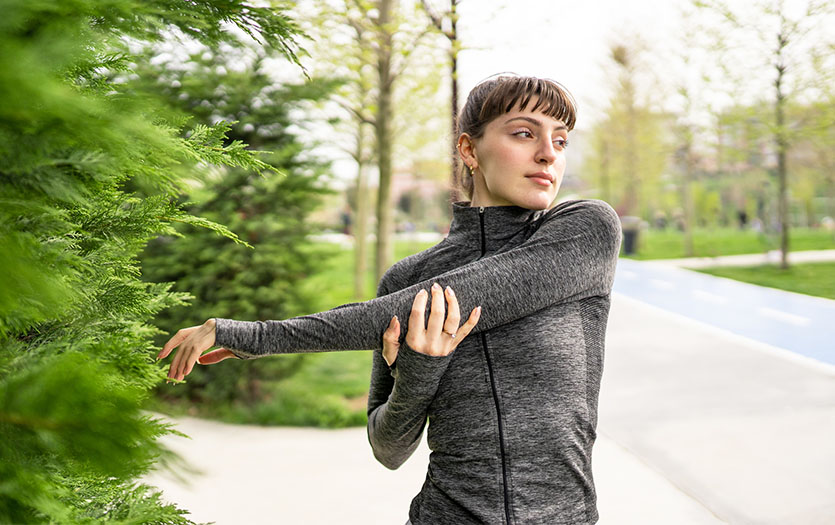
This post was written by Jithmie Jayawickrema, PT, Parkview Therapy Services.
Running is an excellent form of exercise that has both physical and mental benefits. Unfortunately, it's also one of the most frequent sources of overuse injuries. Here, we'll outline common runners' injuries and give you a few practical strategies to help keep you pain-free and on track.
What contributes to running injuries
Running injuries often arise from poor form or mechanics, a sudden increase in running volume and strength or mobility deficits. These issues may lead to:
-
Patellofemoral pain syndrome is pain in the front of the knee. It is sometimes caused by wearing down, roughening, or softening of the cartilage under the kneecap.
-
Medial tibial stress syndrome, or shin splints, is a condition that causes pain and sometimes swelling in the front part of the lower leg (shin).
-
Iliotibial band syndrome (ITB syndrome) is pain and swelling of the iliotibial band (IT band), which runs down the outside of your thigh and connects the hip to the knee.
-
Plantar fasciitis is irritation or inflammation in the ligament that connects your heel bone to your toes. You may experience pain in your heel or the bottom of your foot when walking or standing.
-
Achilles tendinitis is pain or tightness at the back of your ankle due to inflammation in the Achilles tendon.
Treatment
Treatment will depend on what type of injury you sustain, but most minor issues can be managed at home with the RICE method (rest, ice, compression, elevation) and over-the-counter pain relievers. Seek medical attention if pain persists or worsens.
If pain or discomfort changes your stride or lasts longer than 2-3 days after a running session, it's time to take a step back and consider modifying your training.
Prevention
In general, strength training, especially single-leg strength training, is vital for injury prevention. Strength training improves running economy and bone, joint, and tendon health, which in turn helps minimize injuries.
Try incorporating:
Plyometric exercises can also help improve tendon health. Considering adding:
-
Single leg hops
-
Box jumps
-
Jump squats
Aim for at least two days of lower body strength training per week and add cross-training sessions on the elliptical or stationary bike during the week.
Before you run
A solid warm-up prepares your muscles for the sudden increase in activity. Set aside 5-10 minutes before your run for some dynamic stretching. Try these moves:
-
Walking quadriceps and hamstring stretches
-
Leg swings
-
Walking lunges
-
Heel raises
-
Resisted sidesteps
Finish with light jogging after your warm-up to raise your heart rate and transition into your run.
Gradual training progression
Whether you're just beginning or returning to running after an injury, it's important to allow your body time to adapt and build a solid aerobic base.
Start by alternating between walking and running for short periods. For example, try running for 2 minutes, then walking for 1 minute. Repeat this for your desired duration. Pay attention to how you feel during and after your sessions, and progress accordingly. When it comes to increasing your mileage, a smart rule of thumb is to raise it by no more than 10% each week.
Importance of form and running mechanics
Running with proper form helps you use your energy more efficiently and reduces your risk of injury. To achieve this, keep an upright posture with a slight forward lean from the ankles, ensuring you land directly under your center of gravity.
While every runner's stride is a little different, the general consensus is that overstriding and slower cadence (steps per minute) can decrease running efficiency. A higher cadence means spending less time on the ground, which is associated with reduced load on the joints and better running economy.
An optimal running cadence typically falls between 165 and 180 steps per minute, although it can vary from person to person. You can use a metronome or certain running apps that automatically track your cadence to find and adjust it as needed.
To schedule an appointment with Parkview Therapy Services, visit us here.



